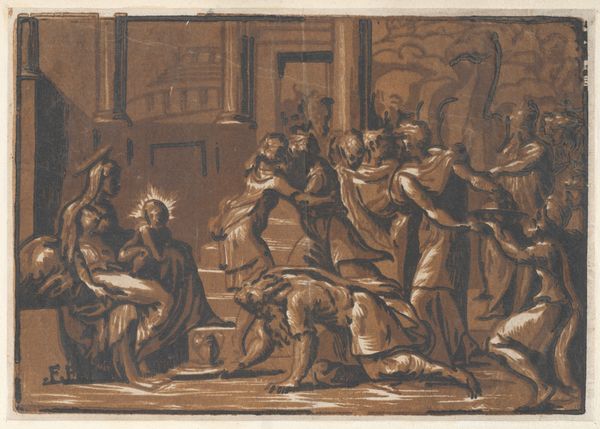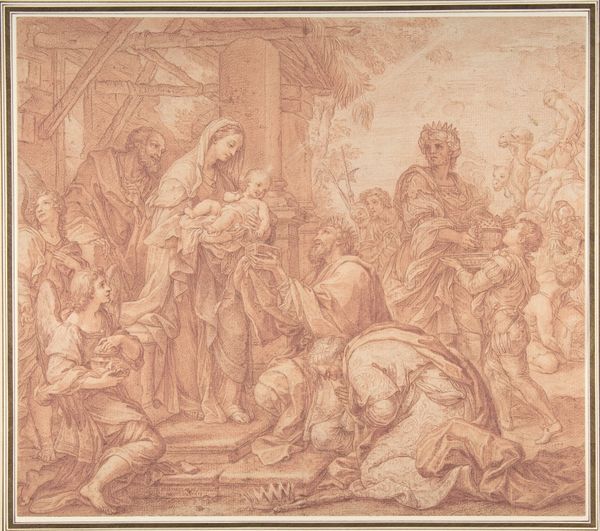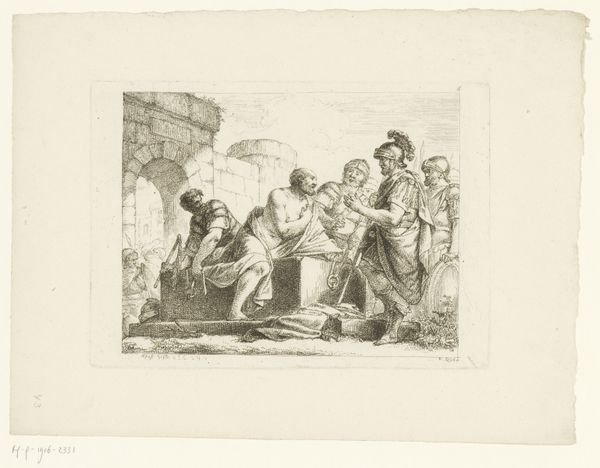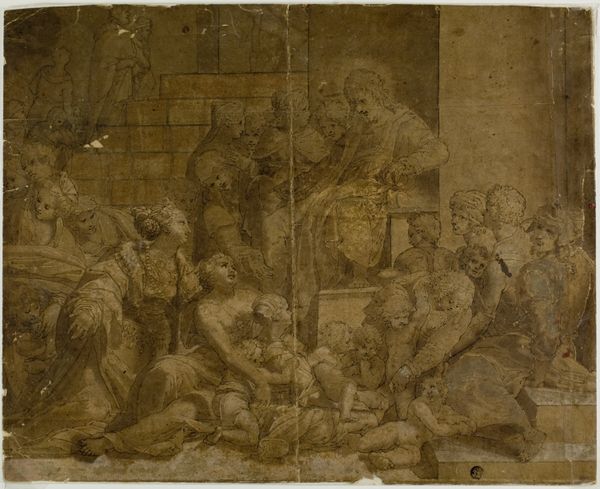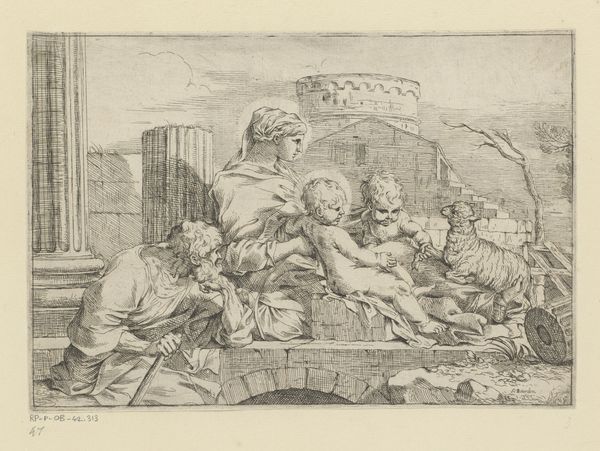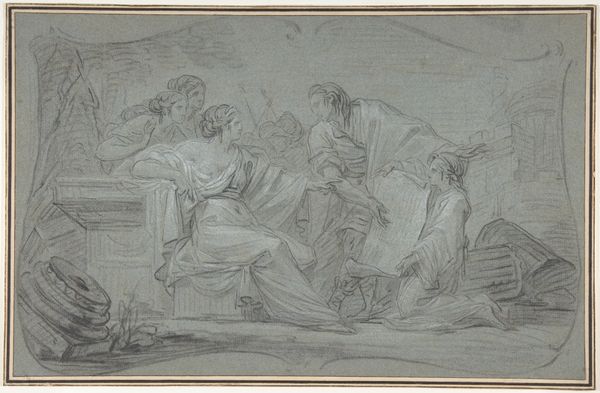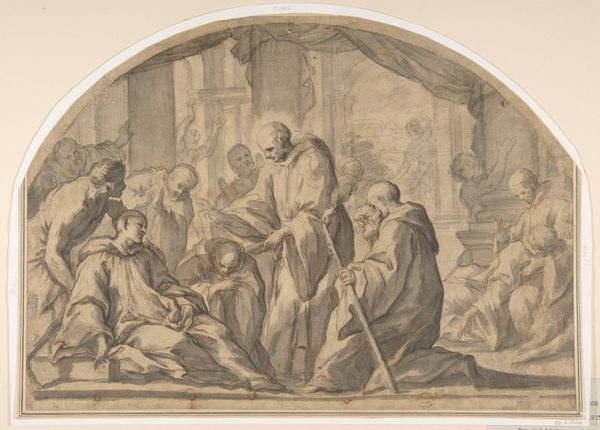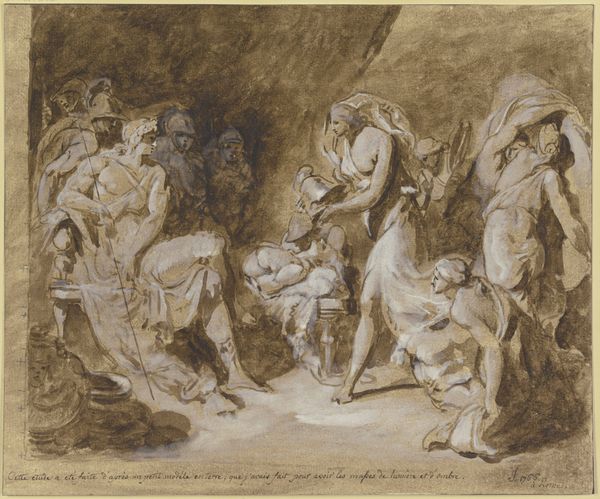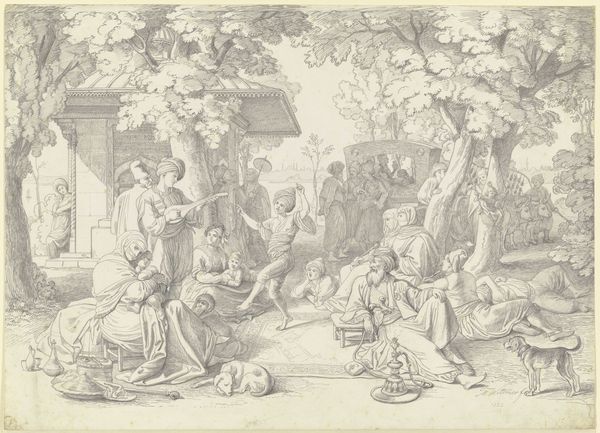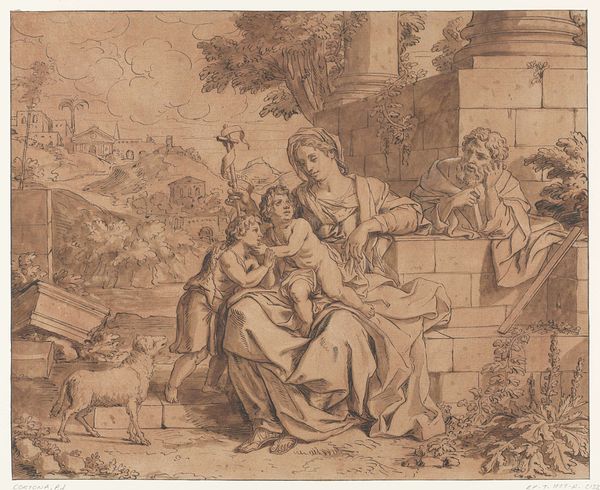
Suffer the Little Children to Come unto Me n.d.
0:00
0:00
drawing, print, gouache, oil-paint, paper, ink, pen, charcoal
#
drawing
#
narrative-art
# print
#
gouache
#
oil-paint
#
charcoal drawing
#
figuration
#
paper
#
11_renaissance
#
oil painting
#
ink
#
pencil drawing
#
pen
#
charcoal
#
history-painting
#
academic-art
Dimensions: 334 × 410 mm (sight)
Copyright: Public Domain
Editor: So, this is "Suffer the Little Children to Come unto Me," by Giovanni Battista Tinti. It looks like it's ink, oil, gouache, pen, charcoal, pencil on paper...quite a combination! The figures all seem to be reaching and pleading. What stands out to you? Curator: I'm immediately drawn to the inherent social commentary within a religious context. Tinti seems to be portraying the very moment of inclusion and exclusion, drawing on religious narrative to amplify concerns about access, privilege, and who is deemed worthy. Consider the hierarchy implied by Jesus' elevated position. Editor: That's true, he's literally sitting above everyone else. The kids are all squished at the bottom, trying to get to him. Is Tinti commenting on class? Curator: I think it's difficult to ignore class and gender in this image, even in the absence of direct indicators. Who were the primary religious figures in Tinti's society and who were actively excluded from those roles, denied authority, and pushed to the margins? Do you see evidence of that dynamic here? Editor: Definitely the women, they seem desperate to reach Jesus, like they're advocating for their children... or maybe for themselves? It makes you wonder about the power dynamics at play. Curator: Precisely. Tinti gives us a glimpse into the construction of social norms and the silent battles fought for representation. Considering it's history painting, he might also imply how those with less power try to be heard by dominant figures, maybe suggesting strategies of disruption. What do you think about it overall? Editor: I had never considered how a seemingly straightforward religious scene could be interpreted through the lens of social activism. That has completely changed my perception of this artwork. Curator: And perhaps this approach encourages us to consider the artwork as a lens through which we can examine current power structures in our own society and the ongoing pursuit of justice and equality.
Comments
No comments
Be the first to comment and join the conversation on the ultimate creative platform.
